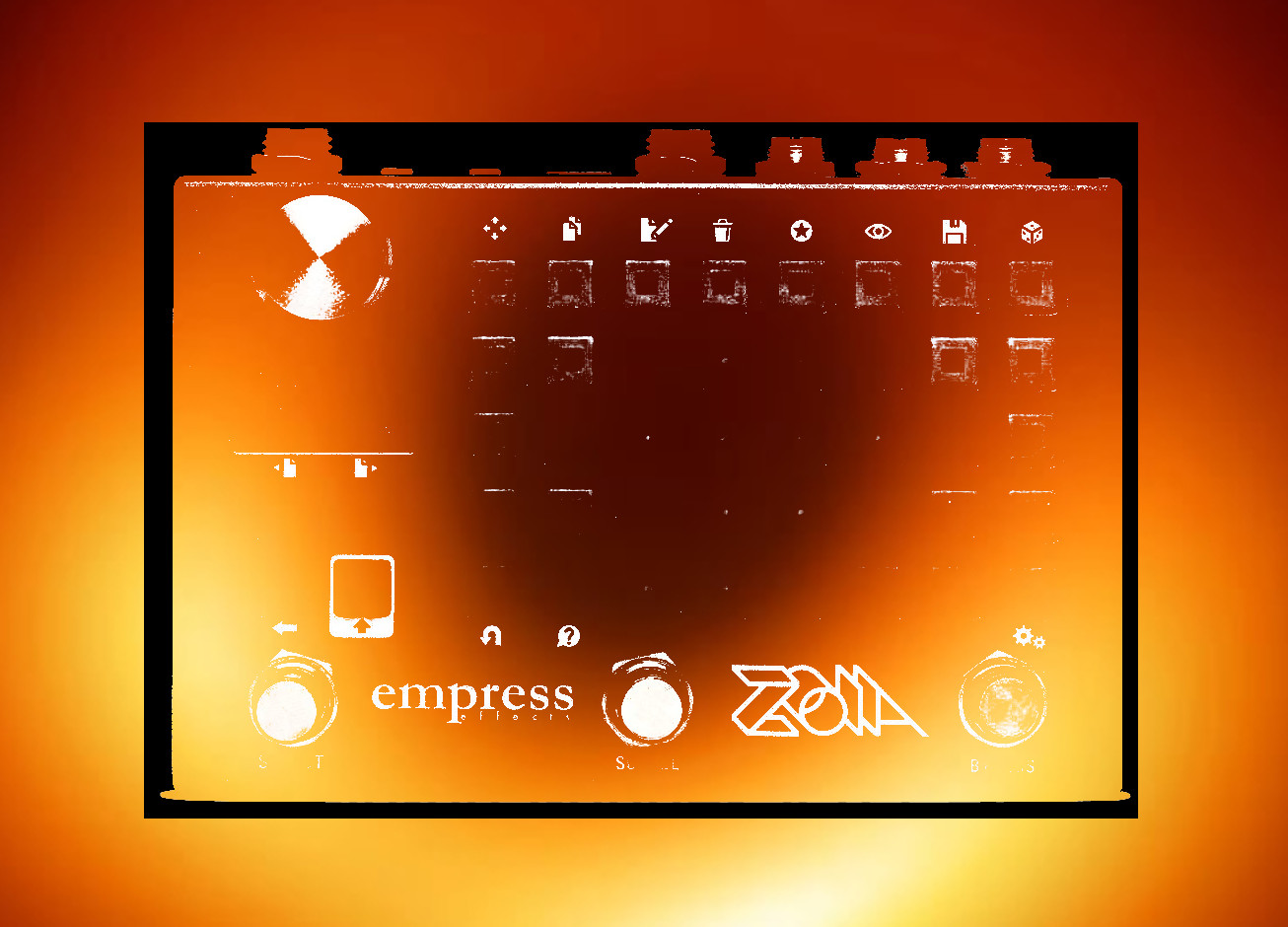I was thinking about the MIDI capabilities of the Hedra, especially the ability to “play” the pitch shifters via MIDI keyboard, and I started to think: ZOIA could do this, too. Admittedly, the ZOIA pitch shifter has some detractors, but it’s still an interesting and useful way to add some unique vocal harmonies, or (as I do in a few of my sound examples) turn a monosynth or a looped sample of a sustained note or a variety of other possibilities and make them polyphonic.
So, the Harmonizer uses four pitch shifters in parallel, controlled via MIDI, to… harmonize. The signal is summed to mono (dry mix is stereo) before passing through the pitch shifters, which are then sent to a stereo spread to reintroduce a sense of “space.” (I may do another version of this with three pitch shifters where I can do a proper pan spread effect but I didn’t have the CPU for the panners with four pitch shifters; controlled by, say, an expression pedal, it could be really cool.)
There are some basic controls to give you some control over the output: each pitch shifter has an ADSR, and there is a portamento control.
A note about stability: In some circumstances, the patch was freezing upon loading (the patch itself operates well within CPU tolerances). The way that I have saved it to upload it seems stable, but you may find if you save the patch in other conditions (particularly, when the portamento is set above 0 seems to be the big one), you may experience this. Additionally, adjusting the portamento while playing may result in some “crackling,” but it will disappear as soon as the portamento is no longer adjusted.
The signal path is stereo for the dry signal; it is summed to mono before passing through the pitch shifters, then outputted in stereo for the wet/dry mix.
The default MIDI channel is 1, and the priority is set to newest.
A special thanks to my patrons on Patreon for their support: Rob Flax, Stepan Grammatik, brockstar, Mats Unnerholm, D Sing, Will Scott, drew batchelor, Miguel, Steve Bragg, Joab Eastley, Tomi Kokki, Mitch Lantz, Ben Norland, and Daniel Morris!
If you would like to support my work on ZOIA, please visit patreon.com/chmjacques
Controls:
Stompswitches:
Left, latching — inverts the MIDI notes. So, going up the keyboard will send the pitch shifters lower and vice versa. Which is a pretty dumb and effect, BUT the reason I did it is because if you _hold_ a chord and invert it, especially with some portamento, it creates a really cool effect as the pitches pass through the centerpoint and create the inverted chord.
Front page:
Mix — controls the wet/dry mix
Portamento — controls the travel time between new played notes
A,D,S,R — controls the amp envelope for the pitch shifters
Key tracking — so, at first, this might seem a weird addition. At 1.000, the pitch shifters track the keyboard. As this value is decreased, they… don’t. The reason I added this control, aside from microtonal adventurers perhaps enjoying it, is at low values, the pitch shifters can be used as detuners to thicken, rather than shift, a pitch.
Keyboard center — by default, this is C4, middle C. The pitches are determined relative to the centerpoint, so if you play D4, the pitch shifter will be raised two semitones; B4 will lower the pitch shifter one semtione. C5, twelve semitones, is an octave. Etc. This is in relation to the pitch of the input, not to middle C (necessarily). You can change the centerpoint to another note on the keyboard if, for instance, your input signal is in the key of A and playing along to it in C messes with your head.
Sound clip:
0:00-0:30 — Turning the humble, monophonic Novation Bass Station II into a polyphonic synth. I invert the chords, then move around the keyboard, with portamento. Since the BSII is also my MIDI controller in this clip, there are some… peculiarities as the input signal shifts with my playing.
0:31-1:16 — I use a simple, sustained note from a korg volca modular to create another polysynth.
1:17-1:36 — I am not a singer. If you want to use this patch with a microphone, you can get better results than this; find the audio input and use the view button to change all of its connections to the maximum.



This is a truly interesting patch. Great work again!